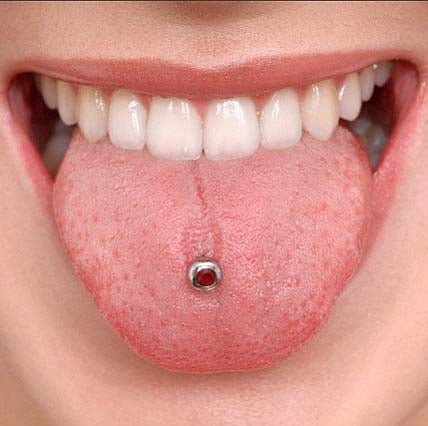
Piercings-Tattoos And What You Need to Know
A tattoo is a form of body art that’s created when ink is inserted, using a needle, into the dermis layer of the skin. This changes the skin’s pigment and can be used to create almost any image imaginable.
Permanent makeup is also a form of tattooing. This is when permanent ink is used to mimic the look of eyeliner, lip liner, eyebrow pencil, or other kinds of makeup.
Tattoos have become more and more popular in recent years. According to the Pew Research Center, almost four of every 10 people born after 1980 have at least one tattoo.
Piercing is another popular form of body art. This is a type of body modification where a needle punctures a hole in the body. Jewelry is then inserted in this hole. Ears, noses, eyebrows, tongues, lips, navels, nipples, genitals, and other body parts can be pierced. More dramatic body modification procedures include using jewelry to stretch the earlobe, implanting beads into the skin, deliberately scarring the skin (scarification), using dermal punch procedures to create a hole in cartilage, and many more.
Although piercings and tattoos have grown in popularity, these procedures have health risks.
Health risks of body modification
Before making the decision to modify your body, it’s important to understand the adverse side effects associated with these procedures, and be completely ready to handle whatever comes during or after it’s done.
Health risks of body piercings
Modifying your body with piercings also carries a measure of risk, such as the risk for a bacterial infection. Some people develop an abscess after getting a piercing. This pus-filled mass can develop around the piercing. This is a serious side effect. If left untreated, there’s the risk for sepsis or blood poisoning.
Sepsis is a life-threatening response to an infection that can result in organ failure and death. Symptoms of blood poisoning include a high fever, chills, a fast heartbeat, and rapid breathing. Infections are more common with mouth and nose piercings because these areas contain more bacteria.
Other risks associated with body piercings include:
- swelling around the piercing site
- formation of a keloid around the piercing
- bleeding caused by a damaged blood vessel
There are also location-specific risks with body piercings. A tongue piercing can cause damage to your teeth and cause you to have difficulty speaking. Additionally, if your tongue swells after getting the piercing, swelling can block your airway making it harder to breathe.
A genital piercing can cause painful sex and urination. The risk of complications is higher if you have other medical conditions like:
Health risks of tattoos
When you receive a tattoo, a tattoo artist uses a handheld machine with an attached needle to puncture the skin. Every time this device makes a hole, it injects ink into the dermis — the second layer of skin below the epidermis.
Tattoos are a common form of self-expression, but they also damage the skin and can cause complications. Complications could include:
- allergic reaction to tattoo dyes, which may develop years later; signs of an allergic reaction include a rash at the tattoo site
- skin infection, such as a staph infection or tuberculosis
- development of nodules of inflamed tissue called granulomas around the tattoo site
- formation of keloids, which are overgrowths of scar tissue
- blood-borne diseases, such as hepatitis B, hepatitis C, HIV, and tetanus; these can be contracted by using contaminated tattoo needles that haven’t been sanitized
- interference with future magnetic resonance imaging (MRI) tests
- burning or swelling at the tattoo site
The long-term effects of tattoo ink and colorings remain unknown. Until recently, no government regulatory agency has closely examined the safety of tattoo ink.
More than 50 colorings used in tattoos have been approved for use in cosmetics, but the risk of injecting them beneath the skin is unclear. Such pigments are regulated by the U.S. Food and Drug AdministrationTrusted Source (FDA). So far, the FDA has only looked at whether these pigments were safe for external use, not for injection under the skin. No coloring has been officially approved for injection under the skin.
- diabetes
- allergies, especially if you’ve ever had a reaction that caused breaking out in red bumps, swelling of the throat, or difficulty breathing
- skin disorders, such as eczema or psoriasis
- a weak immune system
Talk to a doctor before getting a piercing if you suffer from any these conditions.
Precautions for piercings and tattoos
You can lower the chance of health complications with a piercing or tattoo by taking a few simple precautions.
Safety precautions for piercings
- A piercing gun should only be used on earlobes. A hollow needle should be used to pierce other body parts to avoid crushing delicate tissues.
- Piercers should wash their hands and put on a fresh pair of disposable surgical gloves.
- Body piercings should be performed with a single-use needle, which is disposed of after each use.
- Piercing equipment and surfaces should be sanitized and wiped down after each customer.
- Jewelry should be sterilized before being inserted through the body.
Safety precautions for tattoos
- Get a tattoo from a licensed, reputable facility. Tattoo regulations and requirements vary by state, so check with your local department of health for the latest safety laws.
- Needles and razors should not be reused. Make sure you observe your artist remove needles from a new, sealed package.
- Check to make sure your artist uses a fresh pair of gloves and washes their hands before starting the procedure.
- Work surfaces, chairs, and non-disposable equipment must be properly cleaned and sterilized between customers. Choose another facility if there’s evidence of poor sanitation.
- The area of skin being tattooed should be swabbed with a disinfectant, such as rubbing alcohol, prior to tattooing.
- Fresh tattoos should be covered with sterile gauze or a bandage. Follow the artist’s instructions for caring for newly tattooed skin.
Aftercare for piercings and tattoos
There’s also a lower risk of infection and complications from body modifications with proper aftercare steps.
Caring for a body piercing
Signs of an infected tattoo or piercing include red, swollen skin, a fever, and an abscess. See a doctor immediately if you suspect an infection.
Caring for a tattoo
- Keep new tattoos bandaged for 24 hours. Apply antibiotic ointment to your skin after removing the bandage.
- Gently clean the tattoo with plain soap and water, and then pat dry.
- Use a mild moisturizer on newly tattooed skin throughout the day.
- Avoid direct sun exposure for the first few weeks.
- It’ll take up to two weeks for your skin to heal. You can reduce the risk of infection by not touching the tattoo until it heals.
- Gently clean new piercings with a saltwater solution. Soak clean gauze in the solution, and then apply the gauze to the new piercing.
- Only clean piercings twice a day. Overcleaning can irritate skin and slow the healing process.
- Wash hands with warm water and antibacterial soap before touching or cleaning piercings.
Conclusion
Tattoos can be removed, but not always completely or with satisfying cosmetic results. The process is expensive and requires repeated visits to a doctor. Scarring is also likely. The FDATrusted Source recommends laser surgery performed by a dermatologist as a safe tattoo removal technique. Consult your doctor if you’re thinking about having a tattoo removed.
Reversal of piercing is usually as simple as removing the jewelry and allowing the hole in the skin to heal. Punctured cartilage, stretched skin, and other body modifications may require surgical correction.



Leave a comment
This site is protected by hCaptcha and the hCaptcha Privacy Policy and Terms of Service apply.